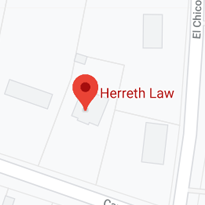Prosecutors are very aggressive when it comes to DWIs. In some jurisdictions, as many as half the probationers were convicted of misdemeanor DWI. Truth be told, many of these cases are difficult to defend.
But that’s certainly not always the case, many times, especially during high-enforcement periods, officers take shortcuts. So, these cases have procedural problems. Other times, particularly in complete refusal cases, the evidence is weak. There are other issues as well, which are explored below.
What is “Intoxication?”
According to the Texas Penal Code, intoxication means “not having the normal use of mental or physical faculties by reason of the introduction of alcohol, a controlled substance, a drug, a dangerous drug, a combination of two or more of those substances, or any other substance into the body.” There are two key elements in this definition.
First, there’s the “normal use” of physical or mental faculties. Police officers like to bring up evidence like bloodshot eyes and odor of alcohol. These kinds of things prove consumption, but they do not prove intoxication. In criminal court, consumption and intoxication are two different things. Agility evidence usually comes from the field sobriety tests. Some people are naturally clumsy or mentally slow. Officers are supposed to account for these things when they administer the tests, but they do not always do so.
Second, there is a wide range of substances that can cause “intoxication” in Texas. For example, pretty much all ingestible substances contain “a drug” of some kind. California has a similar law. In 2015, officers arrested an individual for a DWI due to caffeine consumption. Solano County prosecutors subsequently dropped the charges, but not before the man spent considerable time and money fighting them.
“Driving” and “Public Place”
Most people consider “driving” to be, well, driving. That means operating the vehicle on a street. But in this context, “driving” really means “In control of.” There are numerous instances of individuals sitting in parked cars who were successfully prosecuted for DWI. Some of these defendants were even literally asleep at the wheel.
Tarrant County judges reason that if such individuals have the keys and the car is drivable (has gas, is mechanically sound, and so on), they can become a public hazard at any moment. So, they allow these pre-emptive DWIs.
Sometimes, overanxious police officers pull over drivers in mall parking lots and other similar places. These locations are not technically “public places” according to Texas law. But pretty much anyplace else does qualify as such. Lawyers occasionally talk about “public highways,” but that phrase really means any public street. Alleys fall in a gray area, but almost no DWIs involve alleys.
No-Refusal Weekend
Drivers still have a right to refuse a BAC blood test during a so-called “no refusal weekend,” right until the moment the orderlies strap the driver to the gurney and a doctor inserts the needle in his/her arm.
Because of Birchfield v. North Dakota, officers must obtain search warrants before they administer BAC blood tests. No warrant is necessary for a Breathalyzer test. Typically, officers do not bother with obtaining warrants if the driver does not agree to a breath or blood test. That’s just extra paperwork. But during no-refusal weekends, a judge is on standby to sign warrants at a moment’s notice.
The odds may seem long, but you can beat a DWI in Texas. For a free consultation with an experienced criminal defense attorney in Weatherford, contact Herreth Law. Convenient payment plans are available.

